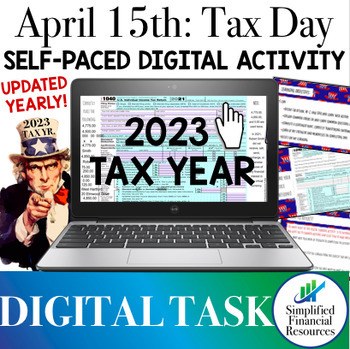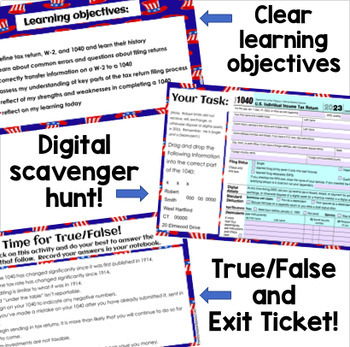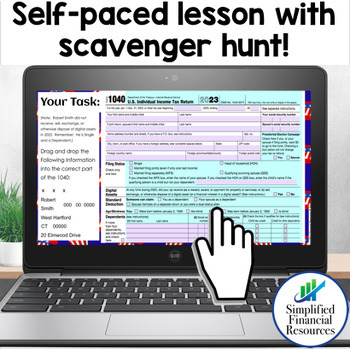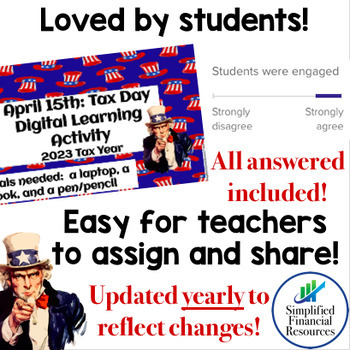April 15th Filing Federal 1040 Tax Return Digital Activity 2023 Financial Lit
- Google Slides™
- Internet Activities
- Microsoft OneDrive

Also included in
- Engage students in the process of filing a tax return with this 5-star rated bundle of tax return filing resources including an interactive digital escape room and a self-paced digital tax activity. Both of these resources are updated yearly to reflect changes to taxation and are CURRENTLY UPDATEDPrice $12.99Original Price $13.98Save $0.99
Description
**Updated for tax year 2023!** Introduce students to taxes and how to file them with this digital learning activity.
In this lesson, students assume the role of Robert Smith, a teen who just received a W-2 from his town's Parks and Recreation Center, where he worked in the summer of 2023. Robert's parents want him to have the experience of completing a tax return (filing as a dependent). Students will do that and more!
In this lesson, students will:
- define tax return, W-2, and 1040 and learn their history
- explain common errors in and learn common questions about filing returns
- complete a scavenger hunt, correctly transferring information on a W-2 to a 1040
- learn of their strengths and weaknesses in completing one
- reflect on their learning
Note: This resource is updated yearly to reflect changes to the 1040.
Technology note: You need Google Drive to access and make use of this product.
See why this is a "great resource"! ⭐️⭐️⭐️⭐️⭐️
Looking for other business education materials?
- Filing a Tax Return Digital Escape Room ⭐️⭐️⭐️⭐️⭐️
- How to Learn the Language of Business: A-Z Guide, Task Cards, Student Workbook
- The Economic Impact of Coronavirus/ COVID-19 on a Pizza Shop: Distance Learning ⭐️⭐️⭐️⭐️⭐️
- The Economic Impact of Coronavirus/ COVID-19 on a Technology Company Distance Learning
- The Economic Surge and Downtown of Businesses due to Coronavirus/ COVID-19 Distance Learning BUNDLE
- Virtual High School Business Classroom Google Slides Distance Learning Editable
Thank you for visiting my store! Please follow me (by easily clicking HERE!) to receive freebies and updates about new products!
Your feedback is valuable to me! I would love to hear your feedback on this resource. Simply go to your "My Purchases" page where you will see a review button. Click on "Have you used this resource? If so, leave a review." Each time you give feedback, TPT gives you feedback credits that you use to lower the cost of your future purchases. Thank you so much!
© Simplified Financial Resources






